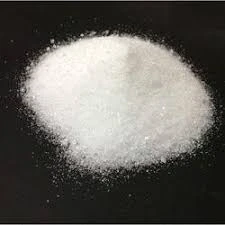Understanding Cellulose Ethers HEC, HEMC, and HPMC
Cellulose ethers, derived from natural cellulose, play a crucial role in a multitude of industries, including pharmaceuticals, food, cosmetics, and construction. Among the various types of cellulose ethers, Hydroxyethyl Cellulose (HEC), Hydroxyethyl Methyl Cellulose (HEMC), and Hydroxypropyl Methyl Cellulose (HPMC) are particularly notable for their unique properties and diverse applications.
What are Cellulose Ethers?
Cellulose ethers are synthetic polymers created through the reaction of cellulose with various etherifying agents. This modification enhances their solubility in water and alters their viscosity, making them versatile formulation aids. The structural differences between HEC, HEMC, and HPMC relate to the type and degree of substitution of hydroxyl groups on the cellulose backbone, leading to distinct functionalities.
Hydroxyethyl Cellulose (HEC)
HEC is a non-ionic water-soluble polymer formed by the reaction of cellulose with ethylene oxide. Its primary characteristic is its thickening ability, which is particularly useful in water-based formulations. This property is essential in industries such as cosmetics and personal care, where HEC is used to enhance the texture and stability of products like creams, lotions, and gels. In construction, HEC is employed as a thickener and stabilizer in masonry mortars and tile adhesives, providing workability and improving adhesion.
In addition to its thickening properties, HEC also acts as a binder and film-forming agent, which further broadens its utility. Its ability to retain moisture makes it a valuable ingredient in agricultural applications such as seed coatings and soil conditioners, where it helps in water retention and plant growth.
Hydroxyethyl Methyl Cellulose (HEMC)
cellulose ether hec hemc hpmc

HEMC combines the properties of both HEC and methyl cellulose, providing an even broader range of functionalities. It is produced through the etherification of cellulose with both ethylene oxide and methyl chloride, resulting in a polymer that retains superior solubility in cold water while forming transparent solutions.
One of HEMC's standout features is its high viscosity, which makes it an excellent thickening agent and stabilizer in various formulations. This property is particularly advantageous in the food industry, where it is commonly used in sauces, dressings, and dairy products to enhance texture and mouthfeel. Moreover, HEMC's film-forming abilities contribute to its effectiveness in various coatings and encapsulations, improving the stability and controlled release of active ingredients.
Hydroxypropyl Methyl Cellulose (HPMC)
HPMC is perhaps the most widely recognized cellulose ether due to its extensive applications across different sectors. Similar to HEMC, HPMC is produced by the etherification of cellulose with propylene oxide and methyl chloride. Its unique balance between hydrophilic and hydrophobic characteristics renders it versatile for both water-based and organic formulations.
In the pharmaceutical sector, HPMC is used as a binder and controlled-release agent in tablet formulations, while its film-forming capacity allows it to be integrated into coatings for controlled drug release. In construction, HPMC enhances the workability of cement-based systems and improves the adhesion of tile adhesives and dry-mix mortars.
In addition, HPMC is employed in the food industry, where it acts as a thickener, stabilizer, and emulsifier in various food products, ensuring quality and consistency.
Conclusion
In summary, cellulose ethers such as HEC, HEMC, and HPMC are indispensable in numerous industries due to their diverse properties and functionalities. Their unique thickening, stabilizing, binding, and film-forming capabilities make them valuable in formulating a wide range of products, from cosmetics to pharmaceuticals and construction materials. As innovation continues to evolve, the applications and importance of these cellulose ethers are likely to expand even further, highlighting their essential role in modern formulations. Understanding their characteristics allows manufacturers to harness their potential effectively, ensuring the development of high-quality products that meet ever-changing consumer demands.
-
Rdp Powder: Key Considerations for Wholesalers in the Building Materials IndustryNewsJul.08,2025
-
Key Considerations for Wholesalers: Navigating the World of Hpmc - Based ProductsNewsJul.08,2025
-
Hpmc Detergent: Key Considerations for WholesalersNewsJul.08,2025
-
Key Considerations for Wholesalers: China Hpmc For Tile Adhesive, Coating Additives, Concrete Additives, and MoreNewsJul.08,2025
-
Crucial Considerations for Wholesalers: Navigating the World of Construction MaterialsNewsJul.08,2025
-
Key Considerations for Wholesalers Sourcing Additive For Cement, Additive For Concrete, Additive For Putty from Additive Manufacturer Shijiazhuang Gaocheng District Yongfeng Cellulose Co., Ltd.NewsJul.08,2025




